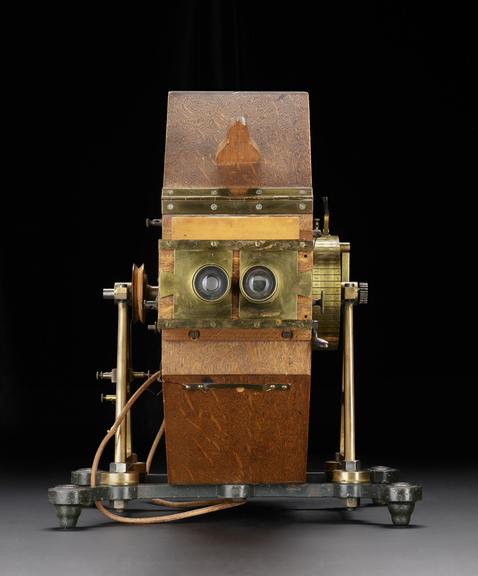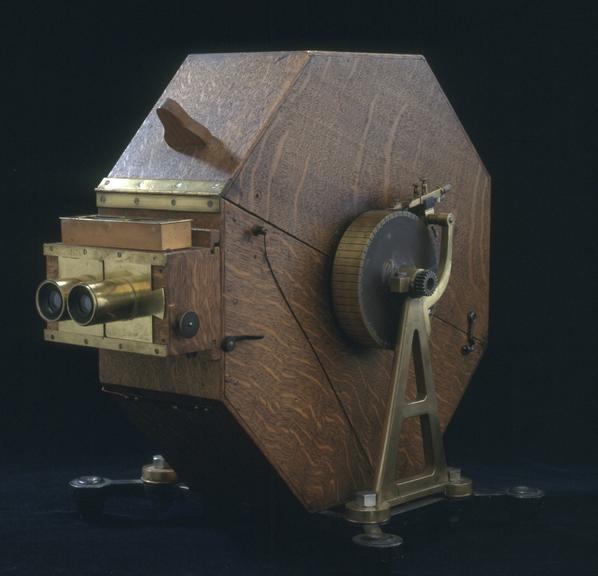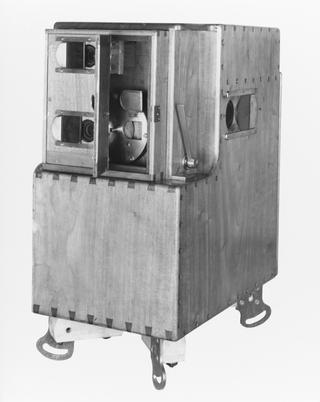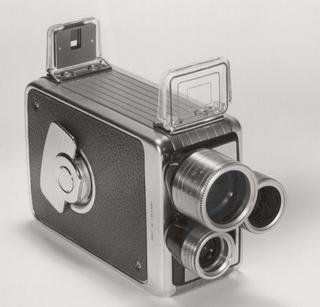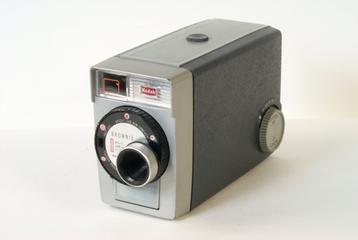
Stereoscopic Spark Drum Camera











Spark drum camera for taking stereoscopic high-speed cinematograph photographs. Invented and used by Dr Lucien Bull, CBE, 1903.
The camera is incredibly sophisticated for its time, just a decade or so after the invention of moving pictures and was the first to analyse the wing-beats of insects. Inside there is a drum, around which two strips of 54 frames of 35mm film are wound. The drum was driven at up to 40 revolutions a second by an electric motor and recorded pictures up to 2000 frames per second.
On right is a rotary contact drum with a couple of brushes. As it rotates, it triggers a series of stroboscopic flashes. These give a high level of illumination but because they are going on and off at very high speed the effect is that images of the moving insect are recorded as separate frames on the continuously moving film – there is no shutter like that normally found in a movie camera.
Because less than 1/40 second recorded on the strip of film it was important that the camera was triggered by the movement of the subject - the insect beginning to fly for instance.
Details
- Category:
- Cinematography
- Object Number:
- 1956-190 Pt1
- Materials:
- wood (unidentified), brass (copper, zinc alloy), glass, leather, metal (unknown) and paint
- Measurements:
-
overall: 430 mm x 510 mm x 370 mm, 11.1 kg
- type:
- stereo camera and cine camera
- credit:
- The National Media Museum, Bradford

